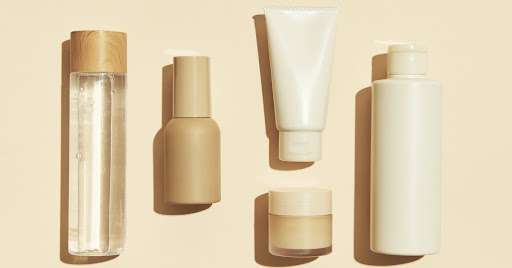In today’s competitive market, it’s more important than ever to make your product stand out. One way to accomplish this is through unique and eye-catching packaging labelling.
Here are five tips to help you create a design that will grab attention and leave a lasting impression.
1. Keep it simple
When it comes to design, keeping things simple should always be your mantra.
Using clean lines and geometric shapes and limiting the number of colours you use will bring focus to the project. It can be a great way to give the packaging an eye-catching yet professional look.
This also helps to eliminate clutter and confusion for viewers, thus creating a clearer message for them to take away.
Keeping it simple means that you can attract attention by allowing elements such as fonts and textures to help create a strong packaging aesthetic while remaining modern and minimalistic.
Your design should include a visual hierarchy to ensure all elements come together with purpose, producing the desired effect.
Prioritising simplicity will guide customers towards your target messaging without much distraction, making it easier for them to comprehend.
2. Create A Unique Logo Or Symbol For Your Brand
Creating a unique logo or symbol for your brand is essential to packaging and labelling design. It helps establish visual recognition as customers go through a variety of selections of similar products.
A logo that conveys its intended message quickly, accurately, and in an eye-catching way can help make a lasting impression on current and potential clients.
Put some thought into crafting a logo that embodies all your brand’s best aspects. The logo should be versatile enough to be featured across various formats, such as online content or physical packaging, thereby generating maximum visibility and exposure.
When done right, a logo can become an enduring and recognisable element that enriches the reputation.
This will be key to driving customer loyalty, creating interest in new potential consumers, and establishing yourself as an authority within your industry. Customers are more likely to purchase your products when they associate your brand quality with the logo on your packaging design,
You can see it in the packaging of 100PLUS isotonic drinks with a distinct label packaging that features its unique logo and the 3 colour stripes.
3. Use High-Quality Materials For Your Labels
When packaging labels need to make an impression, the quality of the materials is key. Popular material choices for packaging labels include paper, such as coated and uncoated paper stocks, or synthetics, such as polypropylene and vinyl plastics.
These materials have a better-looking surface and offer superior performance benefits like durability, water resistance, scratch resistance, and weatherproofing (for outdoor use).
In addition, these labels are lightweight and versatile enough to be used on products of any size or shape.
4. Incorporate Texture Into Your Design
Incorporating texture into packaging design may be the key to making a lasting impression.
Embossing and debossing are two great packaging labelling design techniques to add texture to your packaging.
Embossing is a pressing technique that adds raised print to the labels, which adds depth and dimension, making them more visually appealing for the consumer. Debossing uses an indentation in the paper stock to create a sunken effect on text or artwork, allowing consumers to feel the difference when handling products.
Both techniques are based on the haptic sensory marketing principle to make the products more distinctive and memorable for customers.
5. Be Creative With Your Packaging
Instead of opting for the conventional shapes and sizes, be creative and use packaging that offers something unique.
These include little things such as unique shapes and sizes, interesting texts or images, and the colour of the packaging. Some tweaks here and there with these elements are important in making your product more noticeable when displayed along with your competitor’s products.
Consider packaging that can attract customer attention more quickly than traditional packaging by using unusual shapes, sizes, and designs.
Eye-catching custom packaging, for example, will help you make an even bigger impression on customers.
One of the most common and best examples is the Happy Meal packaging from McDonald’s catered specifically to children. McDonald’s will customise the Happy Meal to appeal to children’s interests based on what is trendy.
No matter what product you are selling, packaging presents an opportunity for your brand to shine.
Conclusion
You don’t need years of design experience to create beautiful packaging labels; all it takes is following a few basic practice principles and challenging yourself to be creative.
Always strive to ‘keep it simple’ by limiting your colour options and cleaning each design with defined lines and shapes. Create a unique logo or symbol for your brand to help customers recognise your products.
Utilise high-quality materials such as paper and plastic in your labels, and try textures like debossing or embossing techniques to attract more eyes to your designs.
Finally, use unconventional shapes or sizes for planning but always keep them functional to make your product stand out among the competition.
In summary, creating fantastic packaging labels doesn’t have to be daunting; just remember these steps to design something remarkable with your label packaging.
Take action now and create a packaging labelling design for your brand!

